Overview
This article delves into various secondary packaging examples that significantly enhance the appeal of nutraceutical products. It showcases innovative solutions such as:
- Blister packs
- Shrink wrap
- Eco-friendly materials
These packaging strategies not only bolster product safety and convenience but also align with consumer preferences. Ultimately, they drive brand loyalty and sales in an increasingly competitive market.
Introduction
The nutraceutical industry is rapidly evolving, with packaging playing a pivotal role in attracting health-conscious consumers. As dietary supplement usage continues to rise, effective secondary packaging can significantly enhance product appeal and marketability. However, with numerous options available, brands face the challenge of selecting the right packaging solutions that not only comply with regulatory standards but also resonate with consumers.
This article delves into ten innovative examples of secondary packaging designed to elevate nutraceutical products, offering insights into their benefits and the trends shaping the future of packaging in this competitive market.
Western Packaging: Tailored Secondary Packaging Solutions for Enhanced Product Appeal
Western Packaging excels in delivering customized solutions, including , that significantly enhance the visual appeal and marketability of nutraceutical products. By emphasizing creative design and utility, their containers not only attract shopper interest on the shelf but also cater to the specific needs of producers and buyers. Recent statistics indicate that over 74% of U.S. adults regularly utilize dietary supplements, underscoring the necessity for containers that resonate with health-conscious individuals.
Effective secondary packaging examples of innovative container design include:
- The use of lightweight seals
- Interactive elements that engage buyers while ensuring product safety
By merging creativity with precision, Western Packaging positions itself as a trusted partner for companies aiming to refine their packaging strategies, ultimately enhancing brand awareness and fostering customer loyalty in a competitive market.
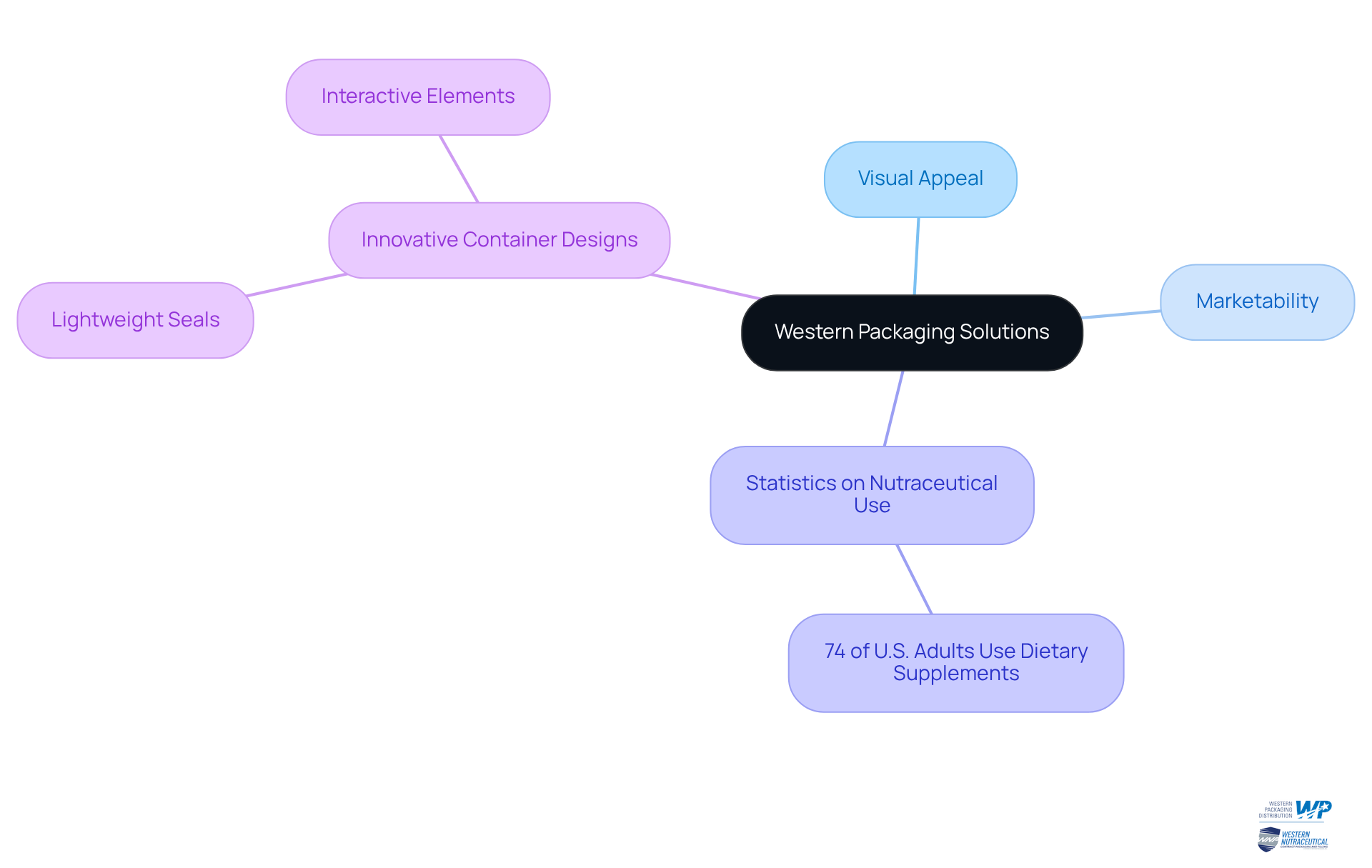
Blister Packs: Effective Secondary Packaging for Pharmaceuticals
Blister packs serve a pivotal role in the nutraceutical sector, adeptly delivering individual doses of products while safeguarding against environmental influences. Their effectiveness is particularly evident in the realm of vitamins and supplements, where they provide tamper-evidence and precise dosage control. This packaging solution not only enhances but also appeals to consumers who prioritize convenience and reliability in their health goods.
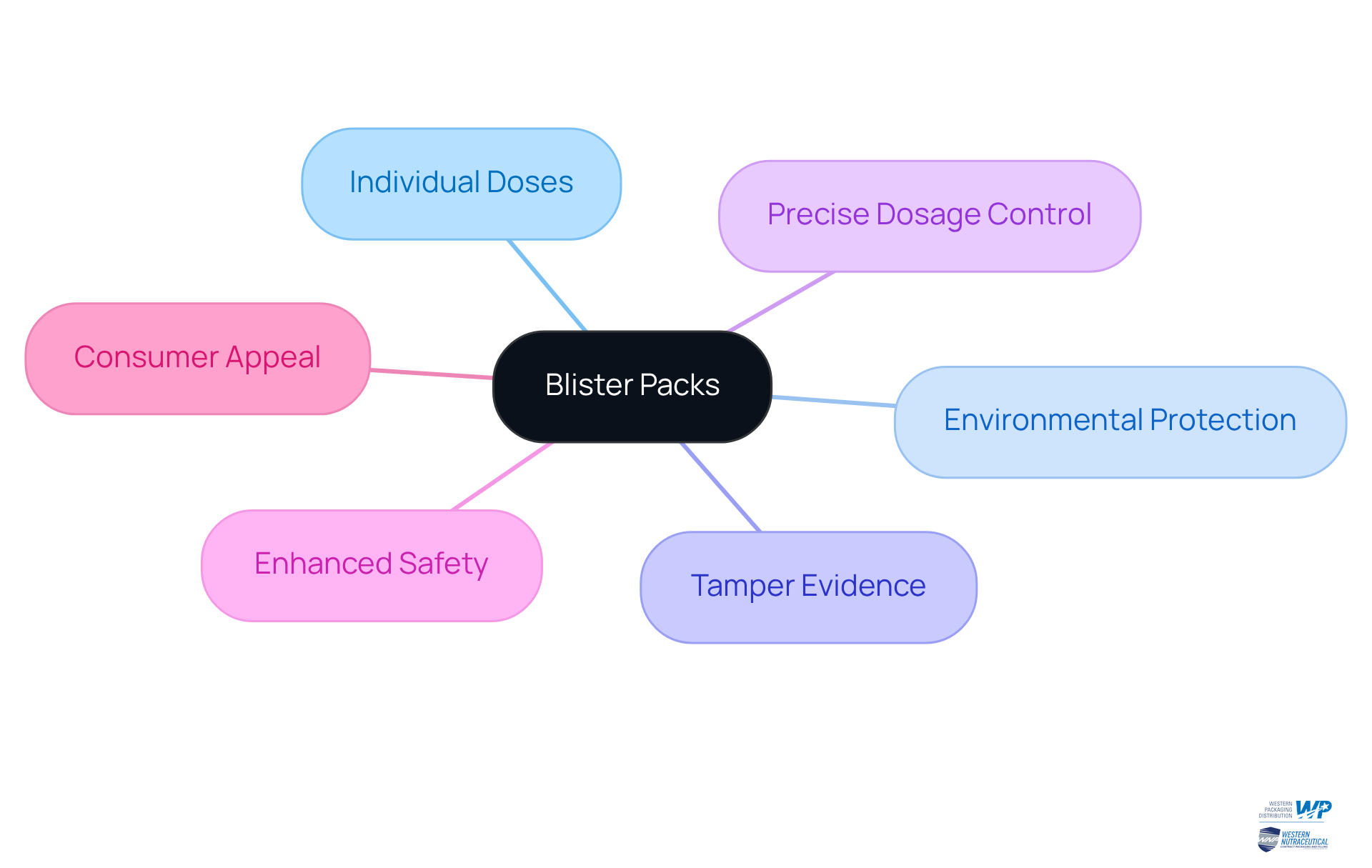
Shrink Wrap: Versatile Secondary Packaging for Product Bundling
Shrink wrap serves as a highly adaptable solution among secondary packaging examples, particularly effective for bundling a variety of nutraceutical items. This wrapping technique not only provides a secure seal that protects products from dust and moisture but also enhances shelf appeal with its glossy finish. Within the nutraceutical sector, shrink wrap is preferred for its capacity to create that capture consumer attention, significantly influencing purchasing decisions.
Consumer perceptions of shrink wrap packaging are predominantly positive, as it conveys freshness and quality. The tight seal ensures item integrity, which is vital for health-related products. Successful promotional campaigns frequently leverage shrink wrap to create appealing multi-pack offerings, effectively increasing perceived value and encouraging bulk purchases. For instance, companies often package related items, such as vitamins and supplements, with shrink wrap to enhance visibility and attractiveness.
Industry experts underscore the benefits of shrink wrap for bundling items. One expert highlights that "packaging-driven innovations, including on-the-go formats and single-use doses, bring convenience to a healthy performing nutraceuticals market." This adaptability not only fulfills consumer demands for convenience but also aids brands in distinguishing themselves in a competitive environment. As the nutraceutical market continues to evolve, the strategic application of shrink wrap will remain a crucial element in enhancing product appeal and driving sales.
Moreover, the global dietary supplement container market is projected to reach $3.661 billion by 2025, expanding at a 5.1% CAGR through 2033. This underscores the importance of efficient wrapping solutions, including secondary packaging examples like shrink wrap, in a growing market. Additionally, the rising consumer preference for convenient packaging, like single-serve options, further emphasizes the significance of shrink wrap in meeting these evolving needs. As Poorva Chaudhari, a team lead, asserts, "The integrity of a label is essential when it comes to handling items like nutraceuticals, which are consumed by a large number of customers." This statement highlights the critical role of wrapping in preserving quality and fostering buyer confidence. Furthermore, the increasing shift toward sustainable packaging solutions is influencing consumer choices, making it imperative for companies to consider eco-friendly alternatives in their packaging strategies.
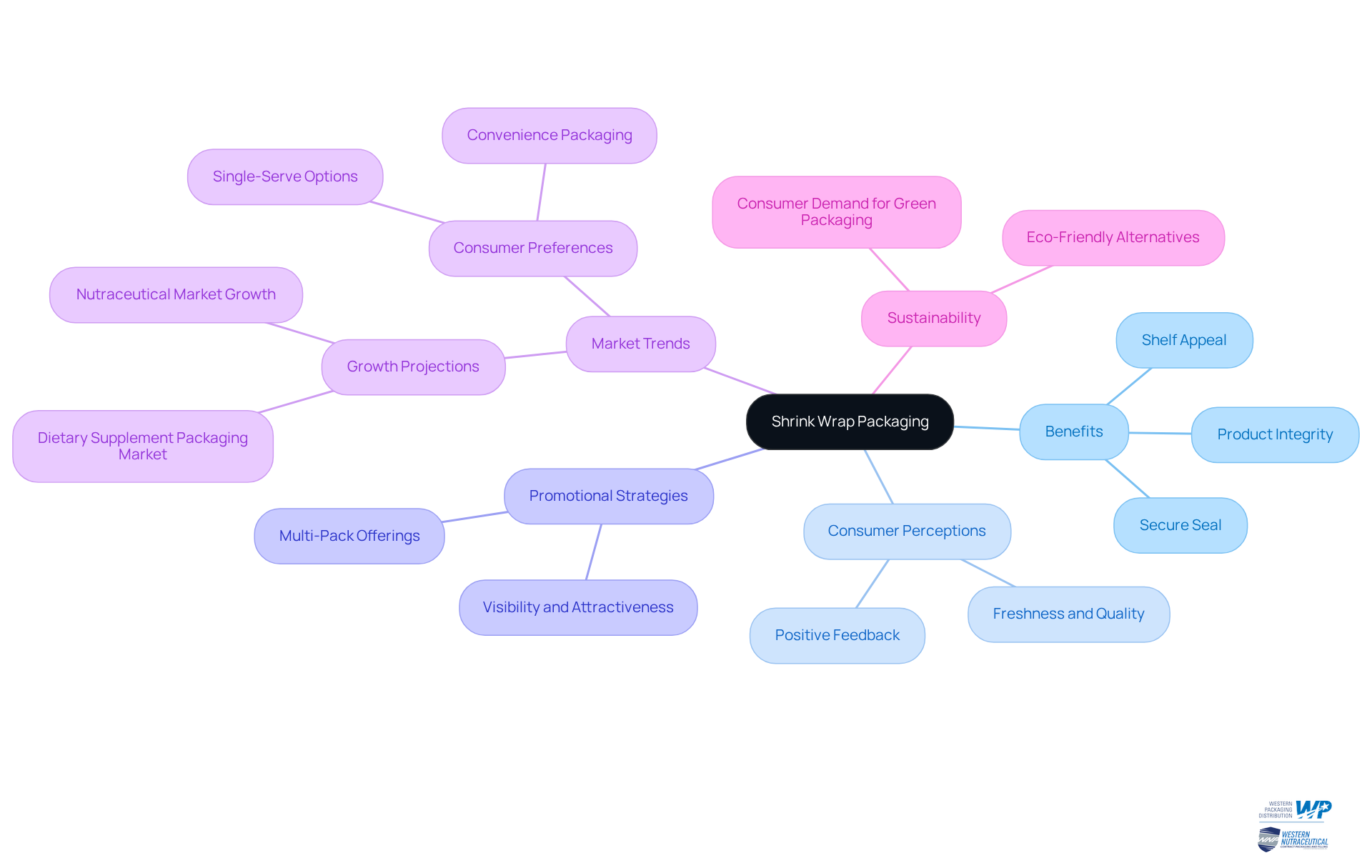
Cartons: Essential Secondary Packaging for Retail Branding
Cartons play a crucial role in the retail environment, serving as an essential medium for branding and communicating item information. Their design effectively embodies a while providing practical advantages such as stackability and protection. In the nutraceutical industry, carefully designed cartons not only convey vital benefits of the item but also attract buyer interest, making them essential in effective strategies for presentation.
Statistics reveal that:
- 72% of American buyers assert that item wrapper design influences their purchasing choices.
- 67% suggest that wrapper materials contribute, underscoring the significance of effective carton design.
Furthermore, specialists stress that efficient wrapping can greatly enhance customer loyalty, with 63% of buyers stating they have repurchased a product due to its attractive presentation. As JohnsByrne observes, "Altering the presentation could deprive the buyer of this pleasure and lead them to feel deceived," emphasizing the emotional bond individuals share with product presentation.
By leveraging these insights, companies can design cartons that resonate with shoppers and strengthen their market presence.
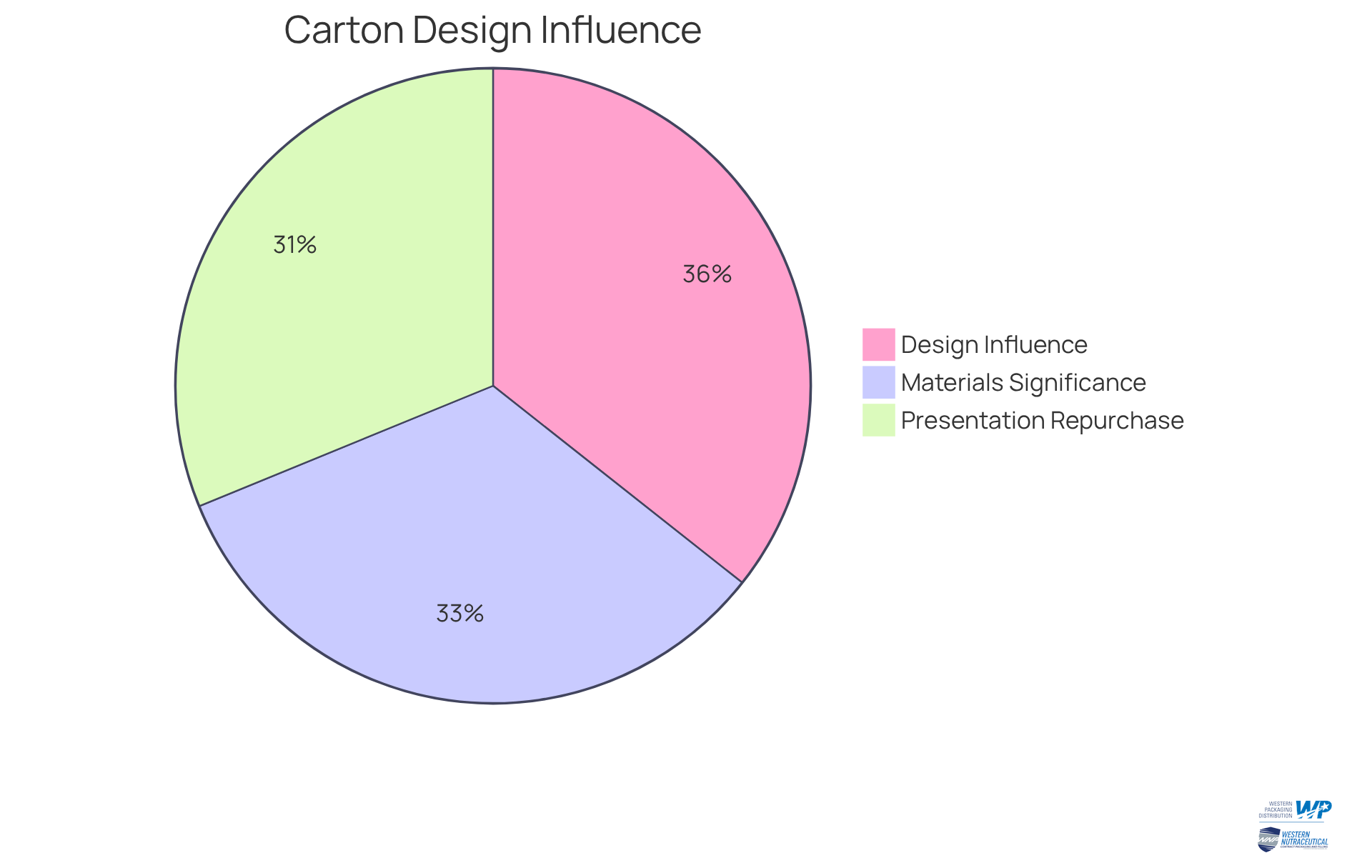
Labels: Informative Secondary Packaging for Compliance and Branding
Labels fulfill essential roles in secondary packaging examples, particularly in ensuring compliance with regulatory standards and enhancing product visibility. In the nutraceutical sector, it is imperative that labels convey ingredients, usage instructions, and health claims with clarity. Effective labeling not only guarantees adherence to regulations but also cultivates trust among consumers and bolsters brand recognition. This makes labeling a .
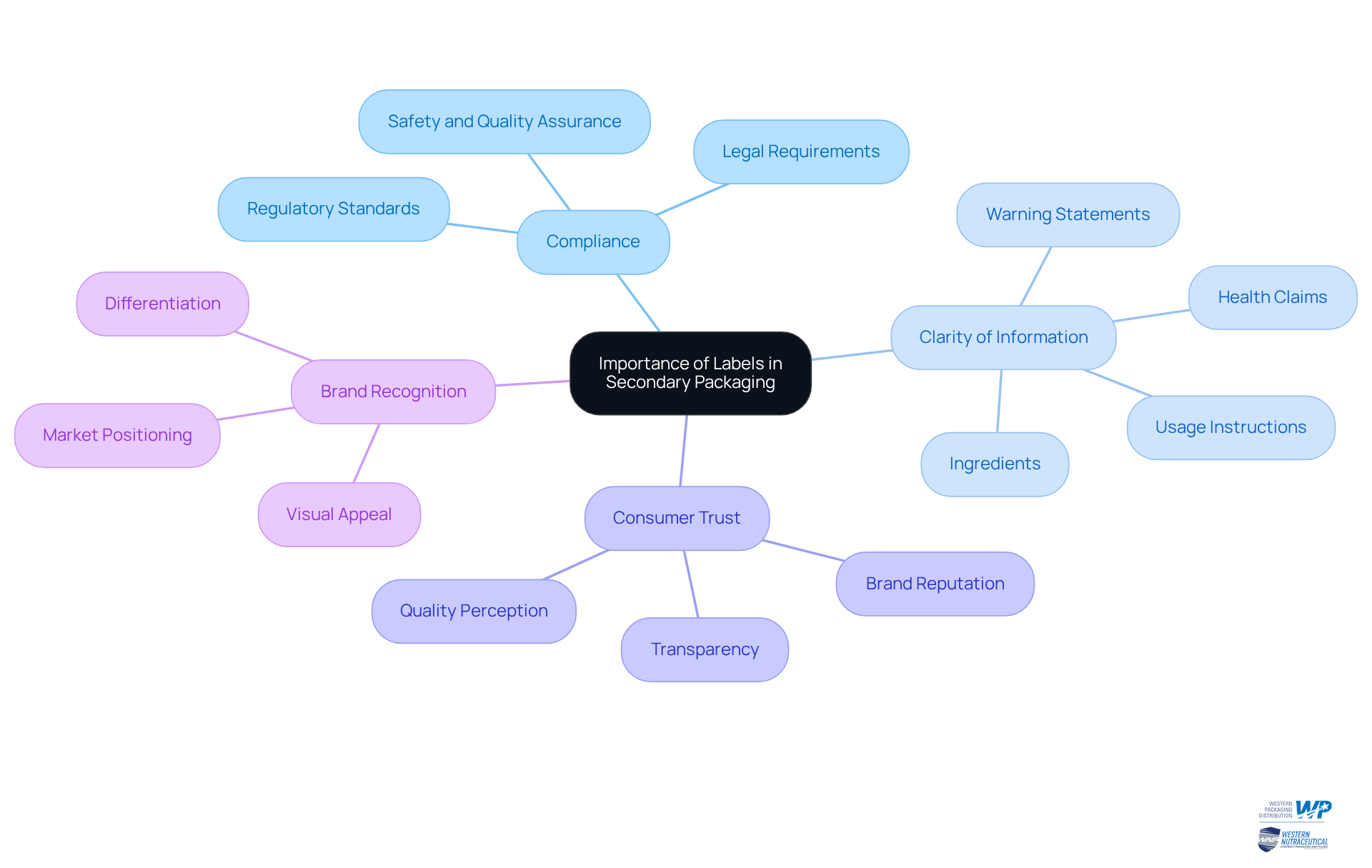
Trays: Organizational Secondary Packaging for Shipping and Display
Trays serve as an essential for both shipping and retail display, providing a customizable solution that accommodates various item shapes and sizes. By securely holding items in place, trays not only protect the integrity of nutraceuticals but also enhance their visibility on store shelves. This heightened visibility is crucial in retail settings, where shoppers benefit from easier access to items.
The strategic use of trays can significantly enhance the presentation of health items, making them more attractive and accessible to shoppers. As logistics experts emphasize, efficient arrangement via trays can enhance management and improve the overall shopping experience, ultimately boosting sales in the competitive nutraceutical market.
Martin Christopher, an expert in supply chain management, aptly notes, "The real competition is between supply chains, not companies," underscoring the importance of effective organization in maintaining a competitive edge. Furthermore, ensuring that trays meet regulatory standards is vital for maintaining public trust and item integrity.
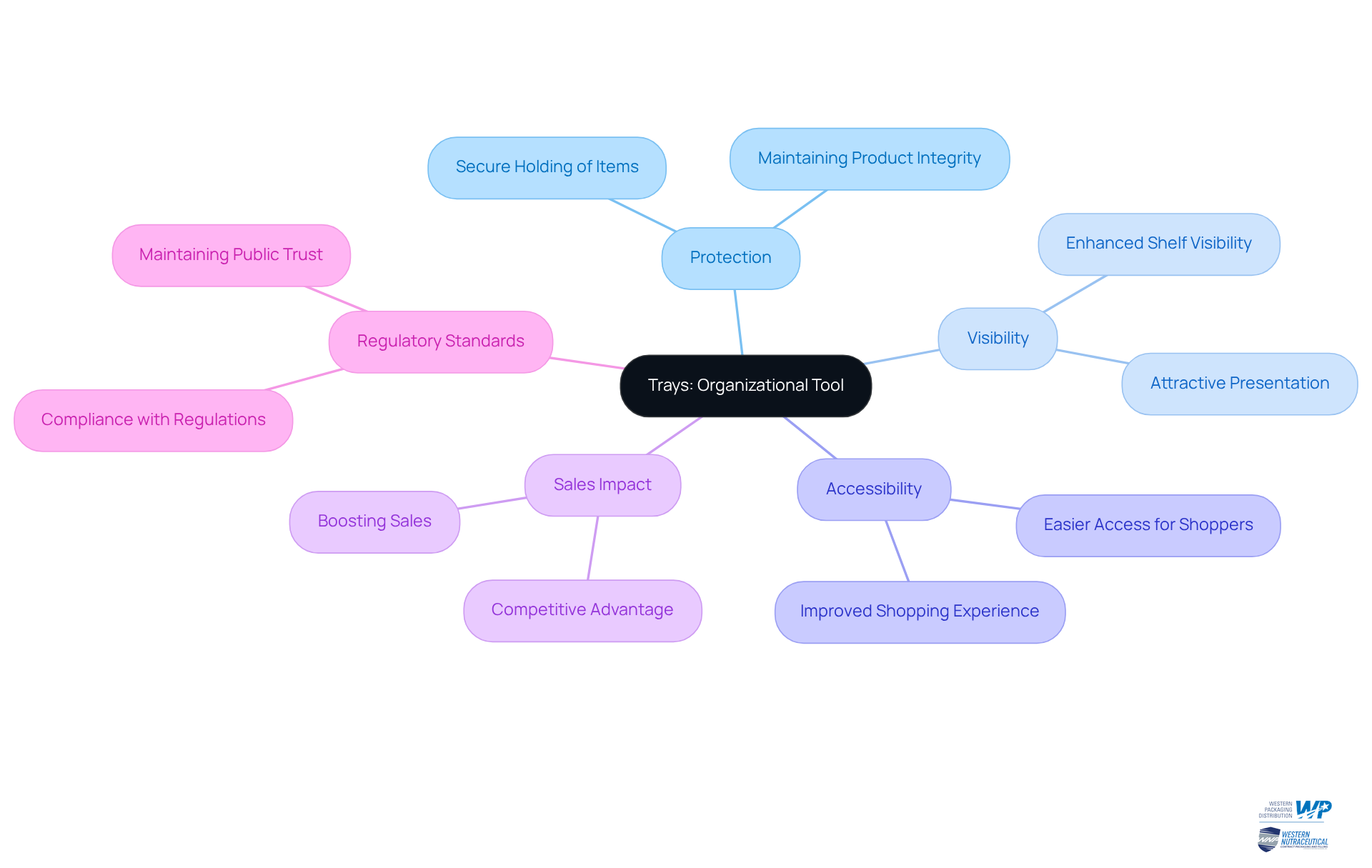
Pouches: Convenient Secondary Packaging for Food and Beverage Products
Pouches present a lightweight and versatile packaging solution, particularly well-suited for various nutraceutical products such as powders and gummies. Their design prioritizes convenience, enabling individuals to carry and utilize items effortlessly while on the go. Importantly, many pouches are equipped with resealable closures, significantly enhancing usability and preserving product freshness. This feature strongly appeals to health-conscious consumers who prioritize accessibility and quality in their dietary supplements.
However, it is crucial to address prevalent misconceptions surrounding the sustainability of pouches. Many assume they are inherently eco-friendly due to reduced plastic usage, despite the challenges associated with recycling. Furthermore, while resealable pouches provide convenience, they may also pose handling difficulties and complications with resealing mechanisms.
The importance of supplement quality assurance protocols cannot be overlooked, as they are vital in maintaining public trust and ensuring product integrity. Successful secondary packaging examples in the nutraceutical market illustrate how companies leverage resealable pouches to improve user experience, ultimately building trust and encouraging repeat purchases.
To enhance the appeal of pouches further, brands should consider and the environmental implications of their material choices.
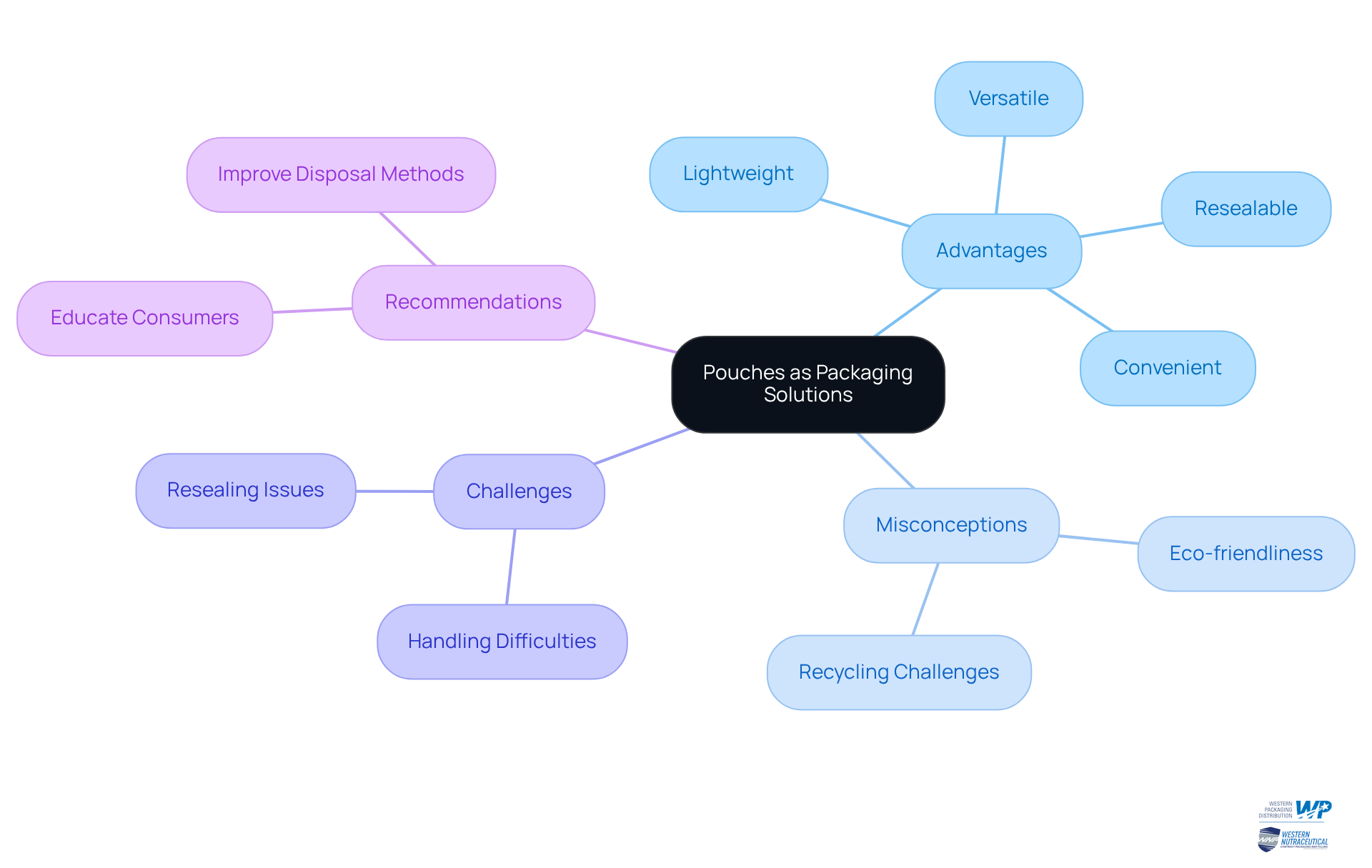
Mailers: Protective Secondary Packaging for E-Commerce Shipping
Mailers serve as a crucial component of e-commerce packaging, providing essential protection for items during transit. Their potential for customization with branding elements significantly enhances the unboxing experience for consumers. In the nutraceutical sector, where the integrity of products is paramount, mailers not only ensure that goods arrive safely but also promote brand identity. This dual functionality makes them an effective choice for online retailers seeking to in their shipping practices.
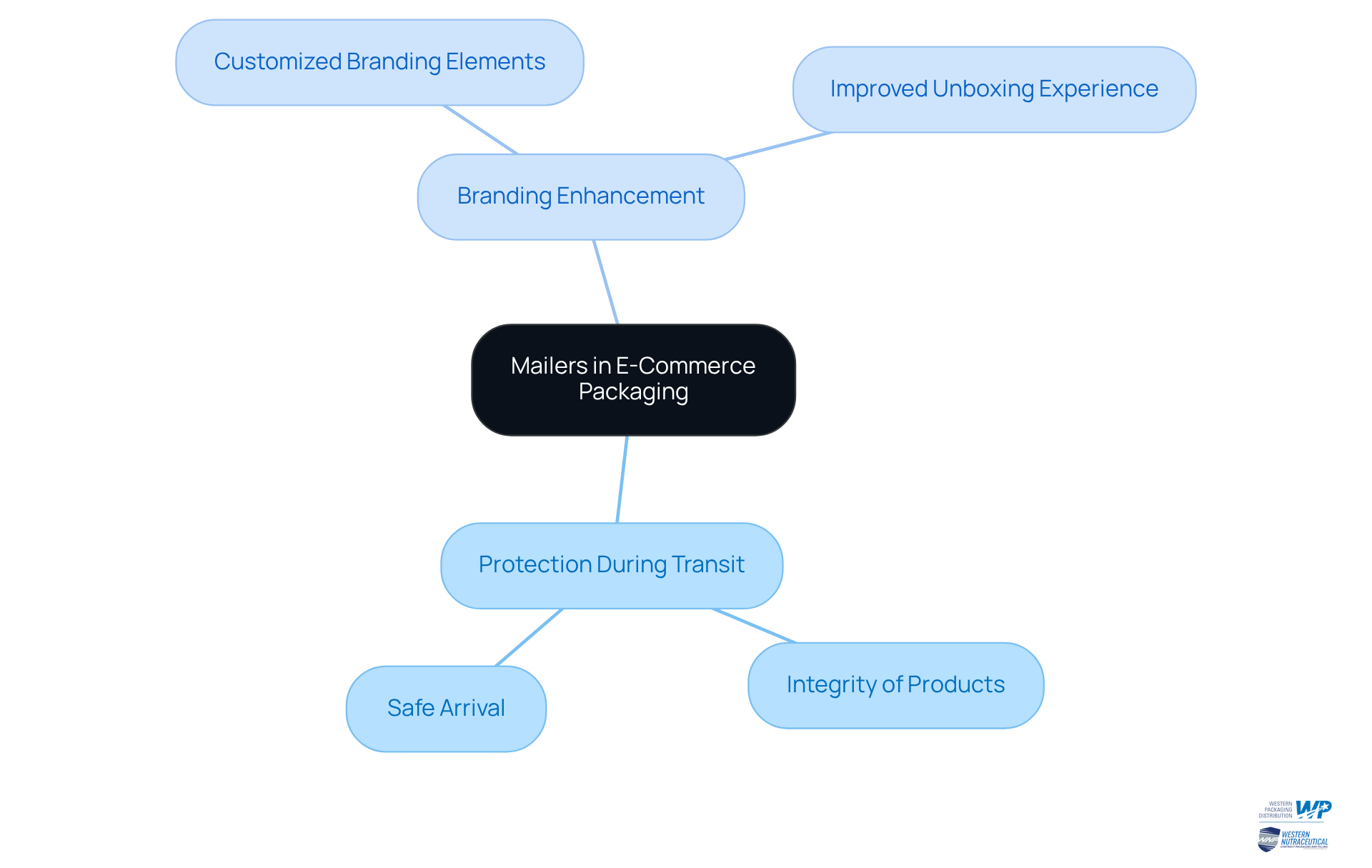
Eco-Friendly Materials: Sustainable Secondary Packaging Solutions
The significance of eco-friendly materials in the shipping industry, particularly within the nutraceutical sector, is swiftly growing. Brands that adopt sustainable practices not only reduce their environmental impact but also connect with an expanding group of individuals who value eco-friendly products.
Employing reusable or compostable substances in secondary packaging examples enhances the company's reputation and fosters customer loyalty. Research indicates that:
- 74% of buyers are willing to spend more for eco-friendly materials, reflecting a significant shift in purchasing habits.
- 48% of US shoppers actively pursue eco-friendly solutions when buying, underscoring the necessity for companies to integrate sustainability into their design.
The sustainable wrapping market is projected to reach $440 billion by 2025, highlighting the economic importance of embracing these practices. This trend directly influences buyer decisions and promotes a .
As the nutraceutical market continues to expand, the adoption of sustainable container solutions, such as secondary packaging examples, will be essential for companies aiming to differentiate themselves and align with the principles of environmentally conscious consumers.
According to MarketsandMarkets™, companies in the nutraceutical container sector are increasingly opting for eco-friendly alternatives, such as biodegradable and recyclable materials, in response to stricter sustainability regulations.
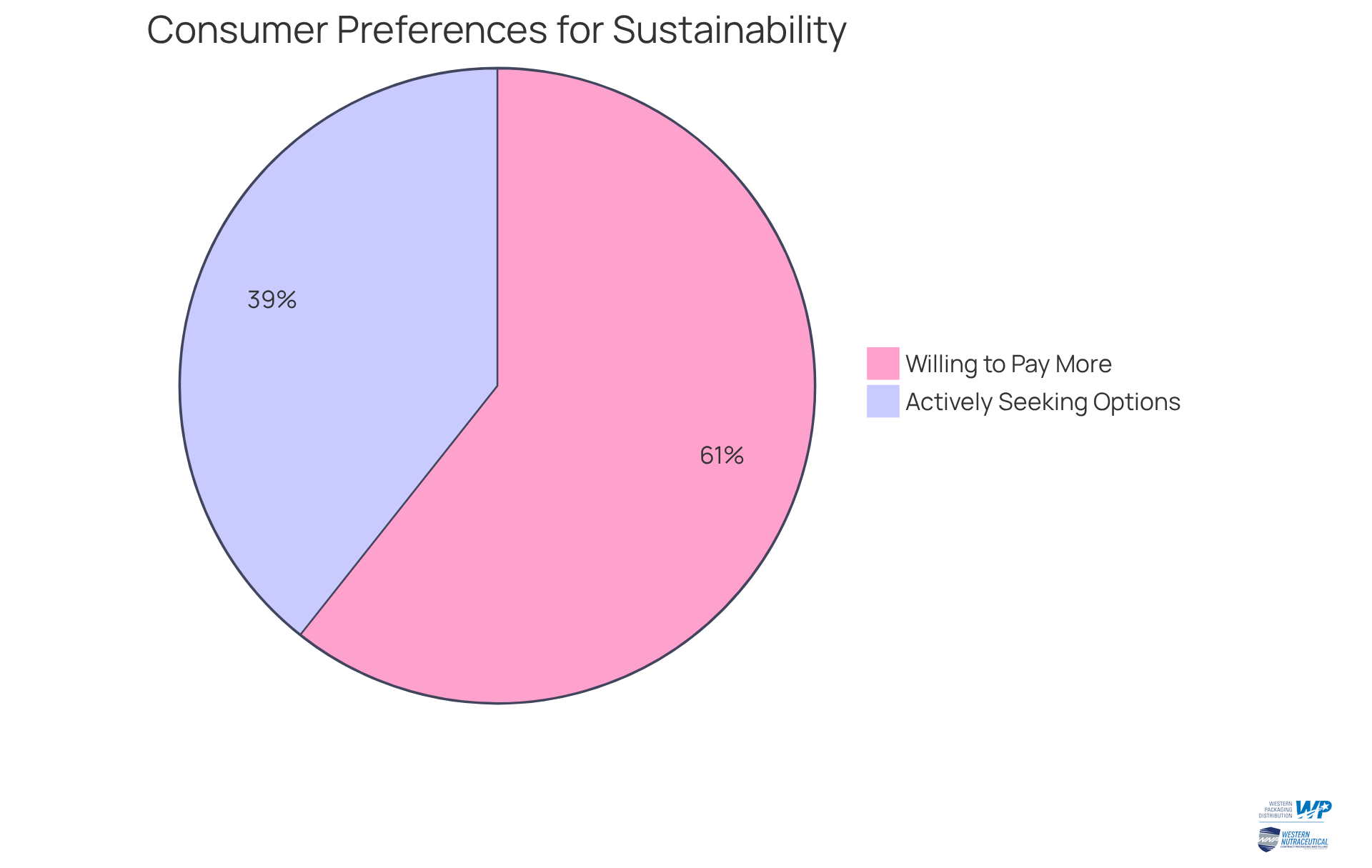
Smart Packaging: Innovative Secondary Packaging Solutions for Enhanced User Experience
Intelligent containers leverage advanced technologies, including QR codes and sensors, to significantly enhance user experience and safety in the nutraceutical sector. By providing real-time insights on product freshness, dosage notifications, and engaging content, intelligent wrapping fosters a stronger connection between customers and companies. This innovative approach not only boosts but also enables brands to distinguish themselves in a fiercely competitive market.
Notably, the adoption of QR codes has surged, with 85% of Gen Z and millennials expressing a preference for smart solutions that prioritize sustainability and interactivity. Successful implementations, such as HEBE LIFE's utilization of QR codes for product authentication, illustrate how intelligent solutions can bolster consumer trust and enhance product traceability.
As the nutraceutical industry evolves, incorporating smart packaging into secondary packaging examples will be essential for elevating user experience and addressing the increasing demand for transparency and safety.
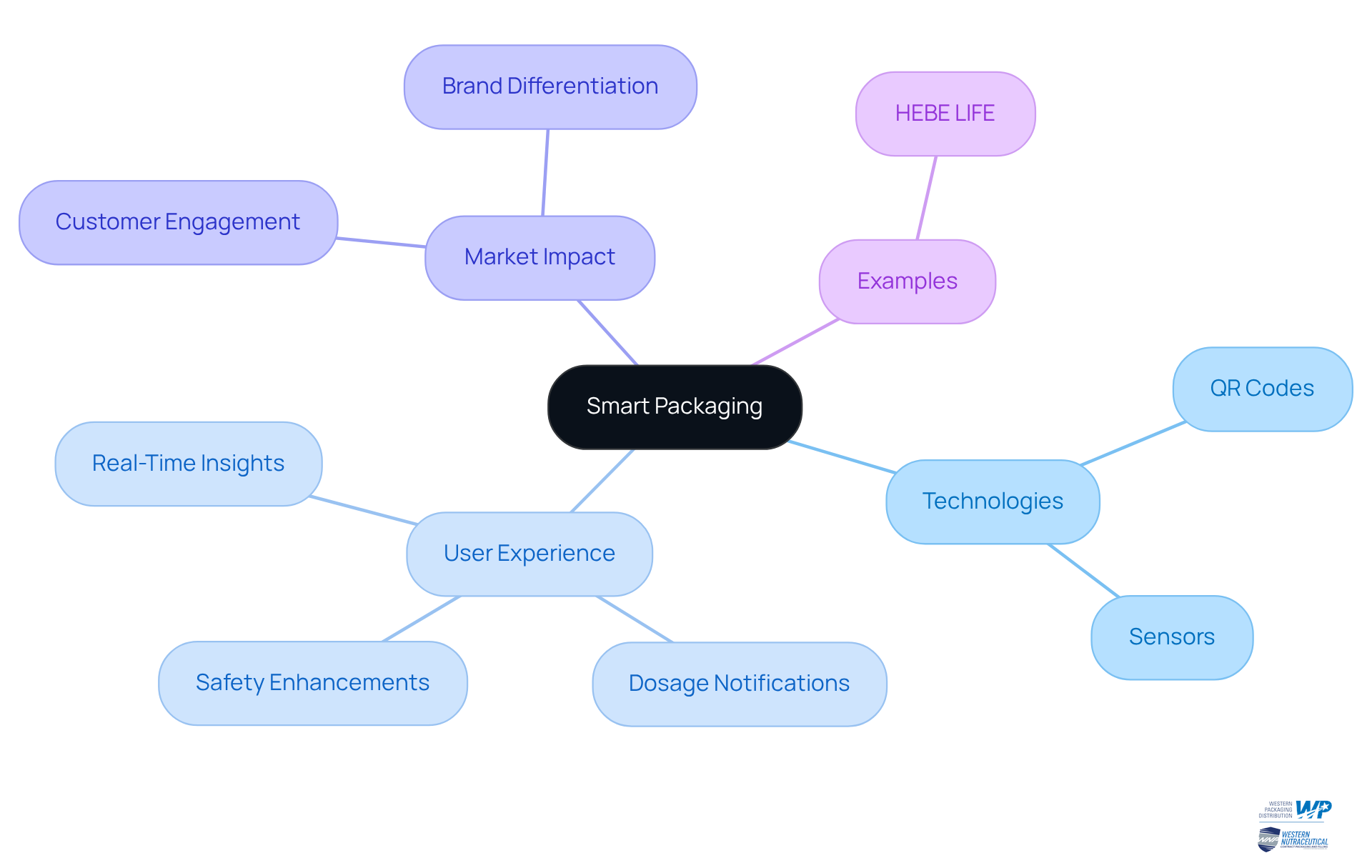
Conclusion
The exploration of secondary packaging examples in the nutraceutical sector reveals the significant impact that thoughtful design and innovative materials can have on product appeal and consumer engagement. By utilizing various strategies, such as custom packaging solutions, brands can effectively resonate with health-conscious consumers and enhance their market presence.
Key insights from the article highlight the importance of packaging types, including:
- Blister packs for safety
- Shrink wrap for visual impact
- Eco-friendly materials that cater to sustainability preferences
Each packaging solution not only serves a functional purpose but also plays a crucial role in branding, compliance, and consumer trust. As the nutraceutical market continues to grow, the integration of smart packaging technologies further emphasizes the need for brands to adapt and innovate in order to meet evolving consumer demands.
Ultimately, the significance of secondary packaging in the nutraceutical industry cannot be overstated. Brands are encouraged to prioritize packaging strategies that not only protect and present their products effectively but also align with consumer values such as sustainability and convenience. Embracing these trends will enhance product visibility and foster lasting relationships with customers in an increasingly competitive market.
Frequently Asked Questions
What are the main offerings of Western Packaging in relation to secondary packaging solutions?
Western Packaging specializes in delivering customized secondary packaging solutions that enhance the visual appeal and marketability of nutraceutical products. Their focus on creative design and utility helps attract shopper interest and meet the specific needs of producers and buyers.
Why is secondary packaging important for nutraceutical products?
Secondary packaging is important for nutraceutical products because it enhances product appeal, ensures safety, and caters to the needs of health-conscious consumers. With over 74% of U.S. adults using dietary supplements, effective packaging resonates with this demographic.
What are some effective examples of secondary packaging mentioned in the article?
Effective examples of secondary packaging include lightweight seals and interactive elements that engage buyers while ensuring product safety.
What role do blister packs play in the nutraceutical sector?
Blister packs play a pivotal role by delivering individual doses of products, providing tamper-evidence, and ensuring precise dosage control, which enhances product safety and appeals to consumers seeking convenience and reliability.
How does shrink wrap function as a secondary packaging solution?
Shrink wrap functions as a versatile solution for bundling nutraceutical items, providing a secure seal against dust and moisture while enhancing shelf appeal with a glossy finish. It is effective in creating visually impactful displays that influence purchasing decisions.
What are consumer perceptions of shrink wrap packaging?
Consumer perceptions of shrink wrap packaging are predominantly positive, as it conveys freshness and quality. The tight seal ensures item integrity, which is vital for health-related products.
How does shrink wrap contribute to promotional campaigns?
Shrink wrap is often used in promotional campaigns to create appealing multi-pack offerings, increasing perceived value and encouraging bulk purchases by packaging related items together.
What market trends are influencing the use of shrink wrap in nutraceutical packaging?
The global dietary supplement container market is projected to grow, emphasizing efficient wrapping solutions like shrink wrap. The rising consumer preference for convenient packaging, such as single-serve options, further highlights the significance of shrink wrap in meeting evolving consumer needs.
What is the importance of sustainable packaging in the nutraceutical market?
The increasing shift toward sustainable packaging solutions is influencing consumer choices, making it imperative for companies to consider eco-friendly alternatives in their packaging strategies to meet market demands.




